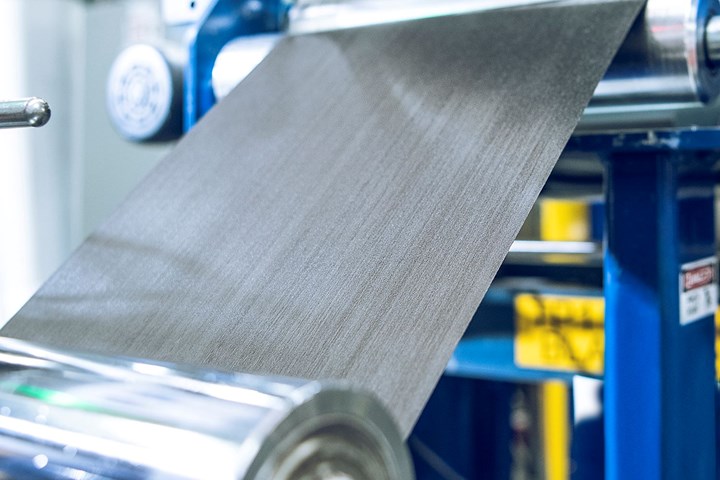Unidirectional Thermoplastic Tape Uses High-Performance Nylon
Toray Advanced Composites’ Cetex TC915 PA is well suited for automotive, high-performance industrial and sporting goods applications.

Toray Advanced Composites has launched a thermoplastic composite unidirectional (UD) tape that uses a high-performance nylon which can be processed by thermoforming and wrapping, as well as ATL and AFP advanced manufacturing techniques that involve the precise placement of composite materials (such as carbon fibers) onto aircraft structures. This can enable the creation of complex, high-strength components that are essential for modern aerospace applications. Toray Cetex TC915 PA+ is said to be excellent for sporting goods, high-performance industrial applications, automotive structure, energy (oil/gas & hydrogen), Urban Air Mobility (UAM) and Unmanned Aerial Systems (UAS) applications.
The material is said to introduce enhanced performance attributes such as increased strength, higher stiffness, higher temperature stability and lower moisture absorption. Says director of product and market strategy Mark Mielke, “TC915 is a remarkable thermoplastic material with exceptional mechanical properties higher than typical polyamide-based composites and nylon material. Toray TC915 PA+ is a natural addition to our Cetex portfolio with enhanced characteristics that allow structural components to perform well in high-stress conditions at elevated temperatures, which is crucial for demanding markets prioritizing safety and performance for their end-users.”
Related Content
-
ICIS Launches: Ask ICIS Generative AI Commodities Assistant
Said to be the first of its kind, this AI assistant will enhance access to ICIS’ intelligence and insights for the energy and chemical markets.
-
Prices of Volume Resins Generally Flat or Lower
Exceptions in early March were PP and PS, which moved up solely due to feedstock constraints, along with slight upward movement in PVC and PET.
-
What's the Allowable Moisture Content in Nylons? It Depends: Part 2
Operating within guidelines from material suppliers can produce levels of polymer degradation. Get around it with better control over either the temperature of the melt or the barrel residence time.





